There are thirty (30) good companion plants for zucchini in this list and twelve (12) bad companion plants. Before getting into the list, let’s a little learn about zucchini.
Zucchini, courgette or baby marrow is a flowering plant in the cucurbit or gourd family Cucurbitaceae. It is a vining plant that produces fruit, which may be called marrow at maturity and is harvested in the summer.
It is a summer squash, and summer squashes are vining herbaceous plants. These plants characteristically bear fruits that are harvested when their seeds are immature and their rinds or epicarps are still and edible.
Most zucchini fruits are green in color and may come in any shade but there exists a variety, the golden zucchini, which bears fruit that may be deep yellow or orange in color. Botany refers to these fruits as berries with hardened rinds but for culinary purposes, they are used as vegetables.
Zucchini is used in several cuisines, mostly Australian, Asian and European cuisines. It is used for food in Australia, Bulgaria, Egypt, France, Greece, Italy, Mexico, Russia, Turkey, Ukraine, USA and many other countries.
Although cooked and eaten as a side or spicy dish and used less often to make sweeter foods, zucchini (and other plants in its family) may contain certain toxins called cucurbitacins which are not destroyed by cooking the fruit.
Cucurbitacins are your plant’s mechanism to protect itself from predators; they are steroids and are bitter in taste to humans. However, the kinds we plant to eat are bred for low levels of this toxin for the safety of those who eat it.
Gardeners are advised not to save their own seeds, and avoid planting cross-fertilization between the seeds cultivated for consumption and the more toxic ones intended for ornamentation. Dry weather and inconsistent watering may also heighten the possibility of this toxin being produced.
One can educate oneself more on this plant to ensure that it is cultivated properly. Moving on, zucchini contains mostly water (95%), then carbohydrates, followed by protein and then fat. It also gives the body several vitamins and minerals.
These vitamins include the vitamins A, B1 (thiamine), B2 (riboflavin), B3 (niacin), B5 (pantothenic acid), B9 (folate), C and K. Minerals include calcium, iron, magnesium, manganese, phosphorus, potassium, sodium and zinc.
Zucchini is very easily cultivate in temperate parts of the world. The edible parts of it include its immature (or mature) fruit, flowers and leaves. Like many other plants in its family, it is an easy one to grow.
For optimal yield, the crop needs an abundance of bees to aid in pollination, exposure of between 6 and 8 hours daily to full sun, very fertile moisture retentive soil, a trellis or lots of sprawling space (for vining varieties) and frequent, consistent watering.
It is actually susceptible to attacks from a host of garden pests, including aphids, cucumber beetles, cutworms, leaf miners, spider mites, squash bugs, squash vine borers, thrips and white flies.
There are several other crops which may be planted with the zucchini in your garden to encourage their growth, help keep pests away from them, attract useful insects to them, help the soil with nutrients, maximize garden space or shade them from excess sunlight.
Such grouping for the purpose of sharing benefits is called companion planting. It is a tried and true method, ensuring that crops are grown around other crops that help foster their growth. As the good and bad companion plants are listed below, reasons why they are so are also given.
Table of Contents
Good Companion Plants for Zucchini
1. Alyssum
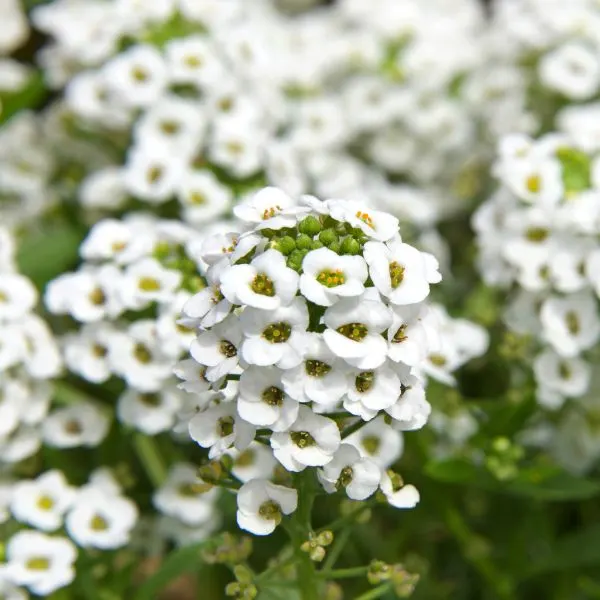
Alyssum is a plant with a sweet scent likened to that of honey. Its beautiful and small flowers are brightly colored, usually in any shade of white, cream, pink or light purple. It is a good companion plant for your zucchini.
This plant draws beneficial insects to your plant while also keeping the harmful ones away. It reduces the infestation of aphids by drawing in insects like ladybugs and parasitoid wasps to prey on them.
In addition, alyssum attracts bees to your zucchini and they help with pollination. This way, it is able to improve the yield of your crop without inconveniencing it by struggling with it for sunlight, soil nutrients or root space.
2. Beans
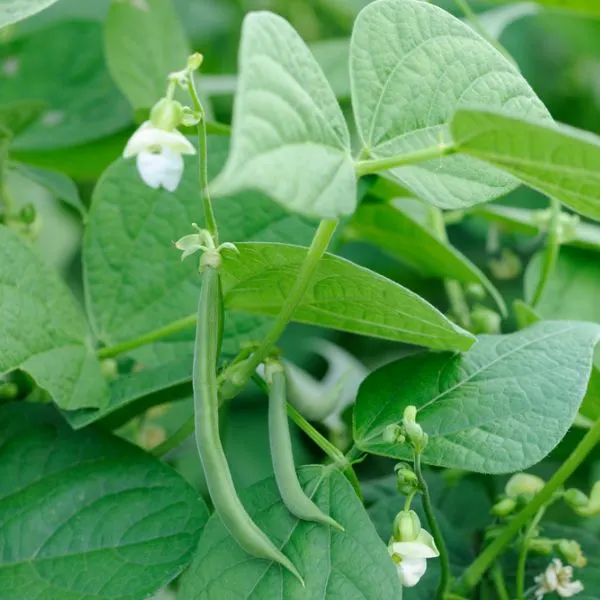
Beans are seeds of several genera of flowering plants that belong to the pea or legume family Fabaceae. Bean seeds (pulses) are then boiled, fried, baked or cooked by some other method and used as vegetables for humans or animals to eat.
Beans are good companion plants for zucchini because they are legumes, plants with nodules in their roots that help fix atmospheric nitrogen in the soil. They improve the quality of the yield of other plants around them because they supply nutrients to the soil.
These plants ensure that your squash is getting the nutrients that it needs to grow healthy and properly, while maximizing the space in your garden as well (they can be used to mulch the soil when they die).
3. Bee Balm
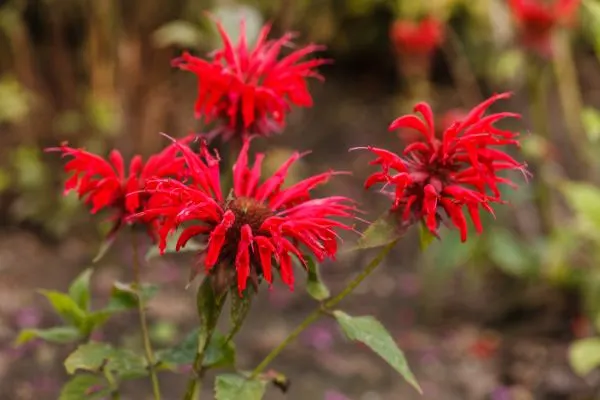
Bergamot, horsemint or bee balm is a genus of flowering plants, Monarda, in the biological family Lamiaceae which is also known as the mint family. Plants in this genus are native to and only grow in North America.
Bee balm is another good companion plant for zucchini. The plants have similar growth needs, thriving under full sun and requiring even or consistent soil moisture. Also, they repel pests while attracting beneficial insects.
With their beautiful pink, purple or purple green flowers, bee balms attract useful insects like bees and butterflies to aid pollination, and pest predators to keep pests away. Their scent also repels several harmful insects.
4. Borage
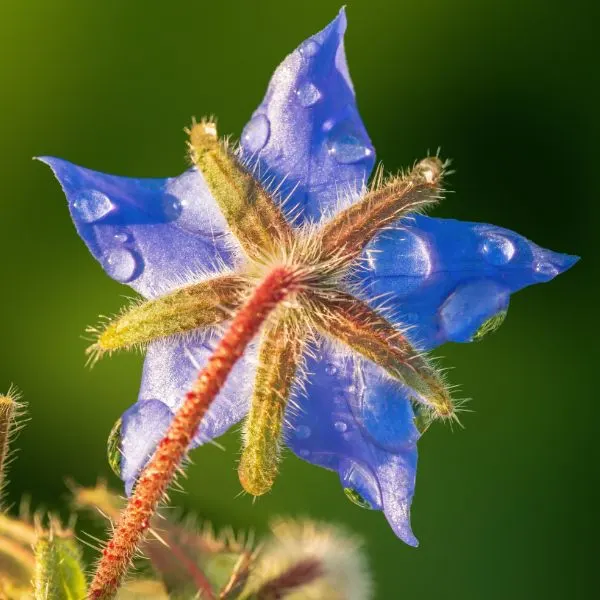
Also known by the name starflower, borage is an annual herbaceous flowering plant in the family Boraginaceae. Native to the Mediterranean region, this plant has complete flowers with five narrow, triangular-pointed petals. These are predominantly blue but also occur in white and pink.
Borage is another plant that can aid pollination because it attracts lots of bees and other pollinating insects to your garden. In the same vein, it can help protect your zucchini from the infestation of cucumber beetles.
This plant is also known to use its deep taproots for the benefit of plants near it. Borage can bring up minerals and water from deep within the soil to make them accessible to nearby plants, like your zucchini, while also building calcium within the soil.
5. Calendula
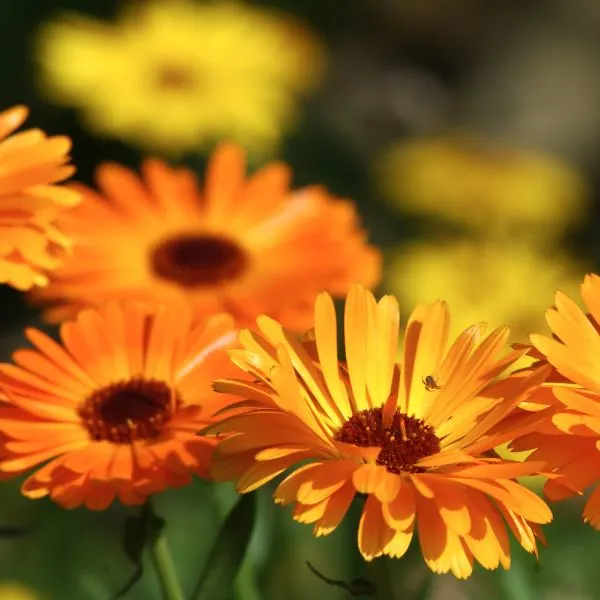
A calendula plant is any of the 15 to 20 species of annual and perennial flowering plants within the genus Calendula. They belong to the daisy family Asteraceae and serve as suitable companions for your zucchini plant.
Calendula, also known as pot marigolds, bear fragrant and beautiful orange flowers that are also waxy. They are very astonishing and attractive so they draw in a number of insects that aid pollination.
Some of these pollinating insects like hoverflies, lacewings and parasitoid wasps double as pest predators. They feed on aphids, thrips and white flies, ensuring that they help with the health of your zucchini. Calendula can also serve as a trap crop for aphids.
6. Catmint

Known also as catnip, catmint is a genus Nepeta of aromatic herbs in the mint family Lamiaceae. There exist about 250 species of flowering plants in the family. They have tubular flowers which may be blue, lavender, lilac, pink or white.
They are known as catnip or cat mint because of the euphoric effect that the compound in most species, called nepetalactone, has on house cats. Catmint is a good companion plant for zucchini.
When planted on the outer borders of your vegetable garden, catmint can ensure that several garden pests stay away. Some of these are aphids, mice, rats, squash bugs and weevils. It also distracts cats from other crops.
7. Chamomile
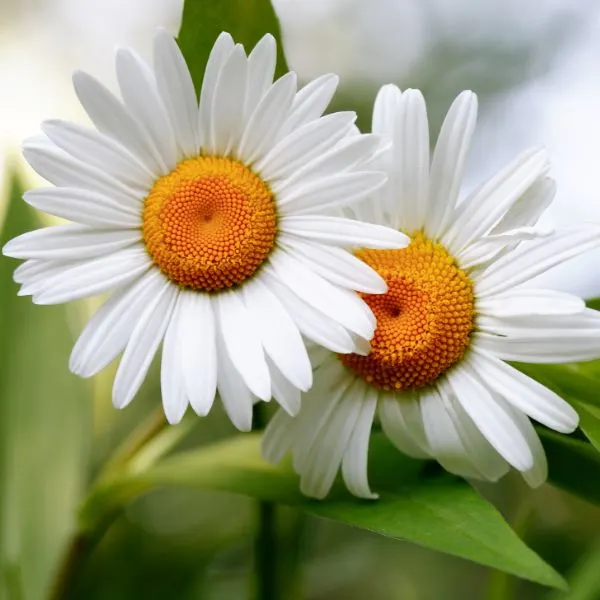
With an alternative spelling “camomile”, chamomile is a flowering plant of the daisy family Asteraceae. It has feathery leaves and flowers with white rays. Parts of this applescented plant are made into healthy beverages high in antioxidants.
Chamomile is an excellent herb to plant beside zucchini. It repels flying insects while also bringing beneficial insects to the crops in your garden. Its flowers attract flower flies to aid pest control and other insects that aid in pollination.
Beneficial wasps, honey bees, hoverflies and lady bugs are some insects that chamomile can attract to aid pollination and control pests. Chamomile also helps to build beneficial chemicals within the soil.
8. Chives
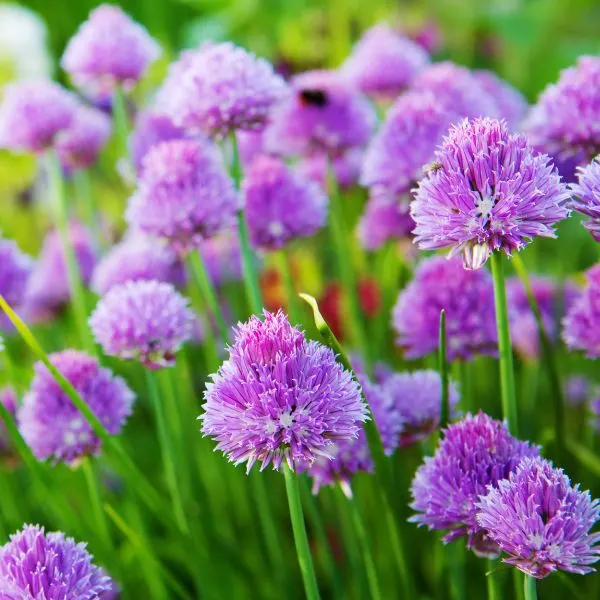
One of the best companion plants for zucchini is the chive. Chives are green flowering plants that produce edible greens leaves and bright whitish pink or whitish purple flowers. They are used to add flavor to and adorn food.
Chives are beneficial to most plants in the vegetable garden. They have a sulfur-based oil that helps keep several plant pests away. Their beautiful flowers attract useful insects and they have been reported to enhance the taste of nearby crops.
Zucchini also benefit from chives because they have pest repellent qualities. The presence of chives in your garden repels deer and aphids.
9. Clover
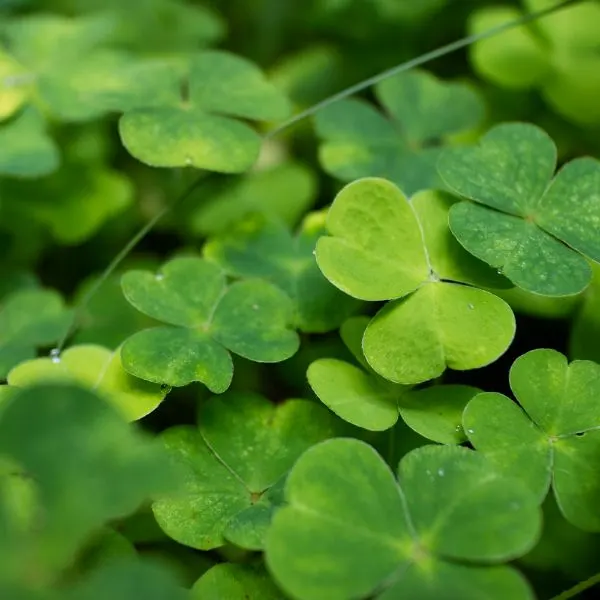
About 300 species of flowering leguminous plants in the genus Trifolium are more commonly known as clovers or trefoils. They belong to the family Fabaceae, the bean, pea or legume family. They have both culinary and medicinal uses.
Clover serves as a good companion plant for zucchini. It fixes nitrogen in the soil and serves as a good cover crop. It re-energizes the soil by replenishing depleted nutrients and thus increases the yield of plants around it.
As a cover crop, it retains soil moisture and suppresses the growth of weeds. This plants also aids pollination and pest control. It attracts pollinators, some of which eat plant pests.
10. Corn

Corn or maize is a species of monocotyledonous flowering plants in the grass family Poaceae or Gramineae. Its leafy stalk produces separate inflorescences known as ears. When fertilized, these ears yield fruits, which are the seeds.
This plant shares zucchini’s growth needs; they both thrive in full sun and moist, nutrient-rich soil. It can serve as a trellis for vining varieties of zucchini. It also does not block out sunlight or battle with your squash for soil nutrients.
11. Dill
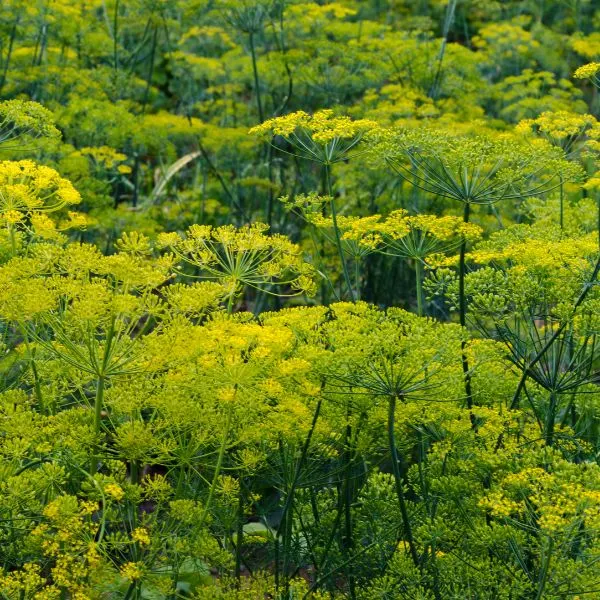
Another good companion plant for zucchini is dill. Dill is an annual herb in the celery family cultivated for its leaves and seeds, which may then be used as herbs or as seasoning for food. Dill is widely grown in Europe and Asia.
Dill has long or deep taproots that dill has that break up heavy soils and loosen the soil. This reduces weed growth. The herb attracts beneficial insects to your plant with its flowers while repelling the harmful ones with its scent.
Bees, butterflies, hover flies and ladybugs will be encouraged to visit your garden. They aid pollination while also preying on aphids, cucumber beetles and thrips, some enemies of your zucchini.
12. Echinacea
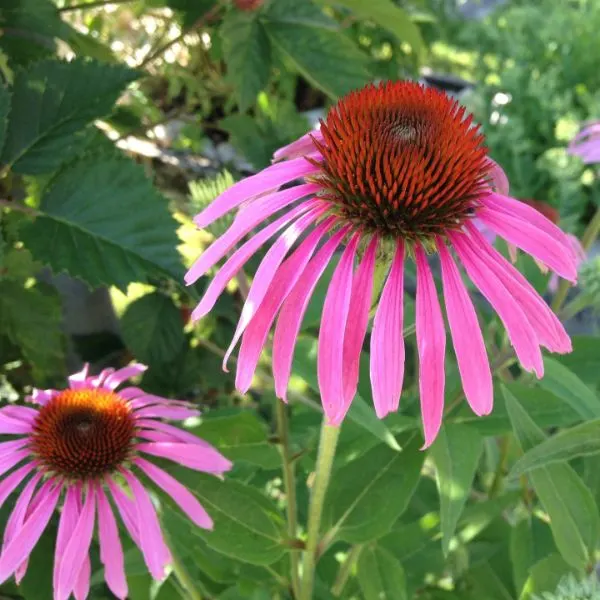
Echinacea is a genus of about ten species of herbs more popularly called coneflowers. These flowering plants belong to the aster, composite, daisy or sunflower family Asteraceae or Compositae. They typically have large, flamboyant and composite flowers that bloom in the summer.
Coneflowers aid your zucchini’s growth by repelling harmful insects and attracting beneficial ones. They help keep aphids and squash bugs away from zucchini but also draw in pollinators with their breathtaking flowers and scent.
13. Garlic
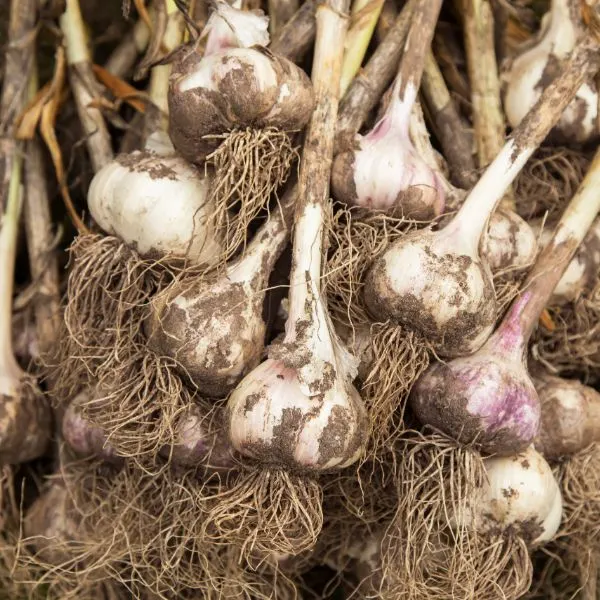
Garlic is a flowering plant in the genus Allium, alongside chives, leeks, onions and shallots. It has a pungent bulb divided into cloves which is used to season food or make an oil used by spraying to deter pests.
This plant emits sulfur, a fungicide (a substance that helps protect your crops from fungal diseases). Garlic can keep aphids, cabbage loopers, deer, fungus gnats, rabbits, snails and spider mites away from your zucchini.
Garlic is also not the most picky crop to grow. As long as it gets full exposure to sunlight and just enough water to avoid stress from drought or bulb rot from overwatering, the plant tends to be comfortable.
14. Lavender
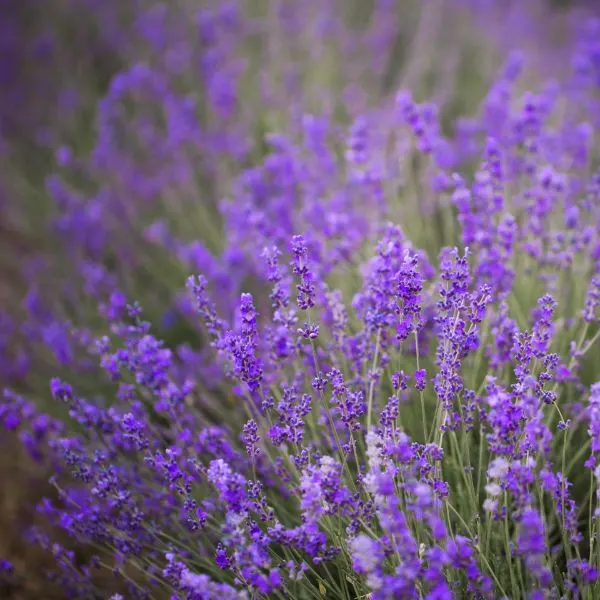
Lavender is a genus of flowering plants (Lavandula) in the mint family. Native to the Old World (Afro-Eurasia), plants of this genus are cultivated for ornamental, medicinal and culinary purposes. They are good companions for zucchini.
The beautiful lavender (a shade of purple) flowers of this crop attract several pollinators, especially bees. This ensures that crop yield is increased as it aids reproduction. Also, the scent of this plant is repulsive to various garden pests.
15. Marigolds
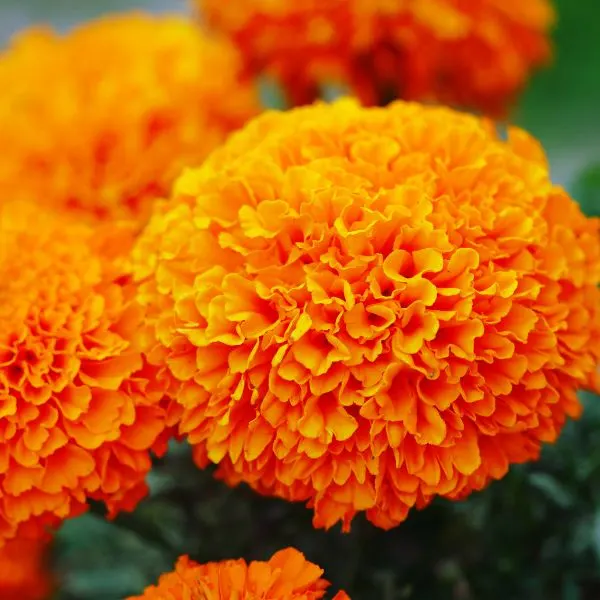
A marigold is any species of herbaceous flowering plants in the genus Tagetes of the aster family Asteraceae. The plant has green, pinnate leaves and brightly colored flowers. Its very beautiful flowers may be yellow, white, orange or golden.
These flowers attract beneficial insects like hoverflies, lady beetles, minute pirate bugs and parasitoid wasps. The joint efforts of these pest predators helps control the spread of aphids, caterpillars, thrips and whiteflies.
Rabbits and rodents are also kept away from your zucchini due to the presence of marigolds. French marigolds specially help control nematodes within the soil that can cause root knot too. They also serve as trap crops.
16. Marjoram
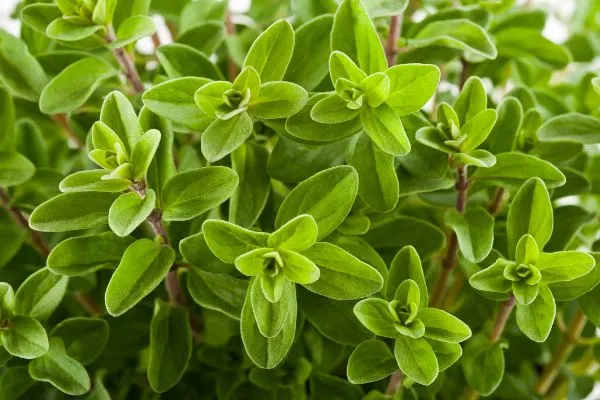
The herb marjoram may also be referred to as knotted or sweet marjoram to distinguish it from oregano. The flowering herbaceous plant belongs to the mint family Lamiaceae and has pine and citrus flavors.
Marjoram is a good companion plant for zucchini. It grows compactly and so hardly ever competes with your zucchini for space or shade the sun-loving crop from its much needed exposure to sunlight.
It also has a pungent odor that keeps pests away from zucchini and flowers that attract beneficial insects and pollinators to aid reproduction and feed on plant pests. Marjoram helps build useful chemicals in the soil too.
17. Mint

Mint is a genus of about sixty aromatic herbaceous flowering plants in the biological family Lamiaceae. Most plants in this genus are perennial, with wide spreading runners under, on or above the ground.
Species within this genus tend to be good companion plants for zucchini. They have a bold and pungent smell that masks the more subtle smell of the melon crop and so protect it from the pests that would rather destroy the plant.
They help repel garden pests like aphids, thrips, mites, and whiteflies. At the same time, these plants have very beautiful flowers that attract pollinators, especially different types of bees and butterflies.
Mint is best grown on its own in a separate container. Mint is a notorious spreader, with quickly spreading horizontal roots and will it will definitely reduce your plant’s yield if planted in the same soil with zucchini.
For more, check our article on the many types of mint there are.
18. Nasturtiums
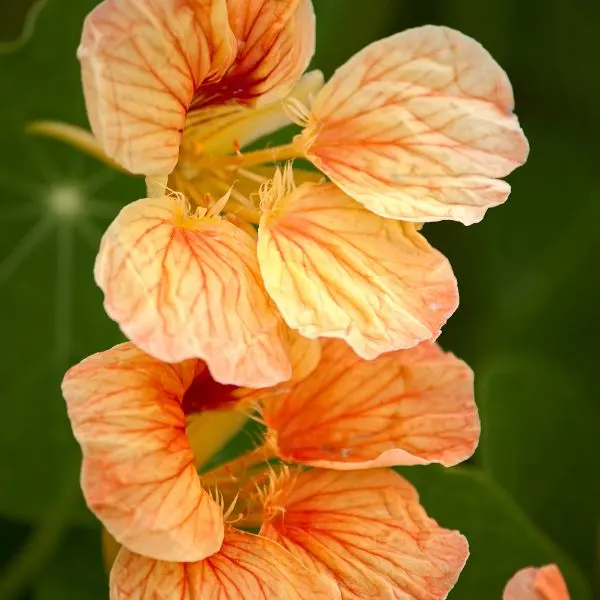
Also known as tropaeolum, nasturtium is a genus of plants that contains several creeping herbaceous plants which may be annual or perennial. These plants have showy round flowers and may be used in herbal medicine or cooking.
Nasturtium is another very suitable companion plant for your zucchini. It is a natural powerful and effective pest deterrent, as it repels aphids, squash bugs and striped cucumber beetles. It also serves as a trap crop by attracting squash beetles, flies, and whiteflies to itself.
It attracts predatory insects and pollinators such as bees, butterflies, hoverflies, ladybugs and parasitoid wasps with its beautiful, vibrant red and orange flowers. It is also believed that nasturtiums can improve the flavor profile of zucchini.
19. Onions
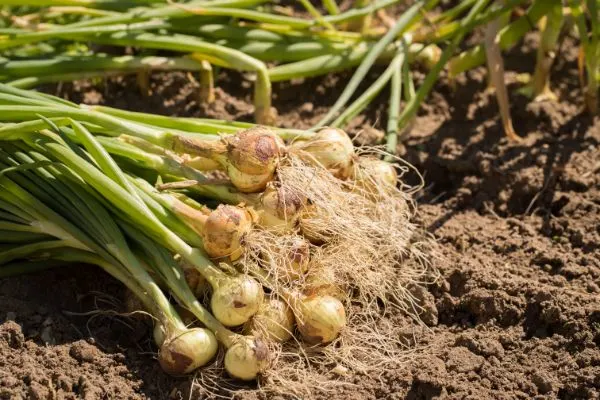
An onion is a flowering plant in the genus Allium with bluish green leaves and a bulb at its base. This bulb is made up of shortened underground stems and fleshy modified leaves. Onion is the most widely cultivated vegetable in its genus.
It is also called the common onion. Onions and zucchini grow well in similar environments and so they are good together. This allium is also repellent to the squash’s pests: aphids, cucumber beetles, deer, rats, rabbits and other rodents.
Because of their high sulfur content, onions can both deter pests and prevent fungal diseases from affecting your crops from within the soil. They do not shade your plant because they have a compact growth pattern and they can loosen up the soil with their large bulbs for your shallow-rooted zucchini.
20. Oregano
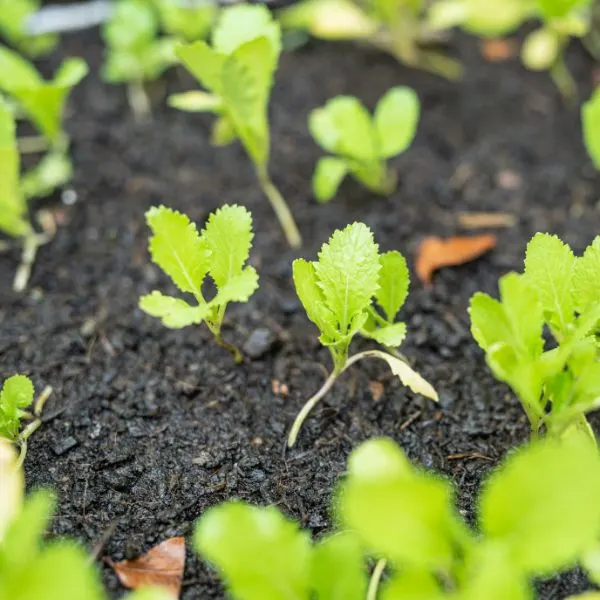
Oregano is a woody flowering perennial plant in Lamiaceae, the mint family. Also called origanium or wild marjoram, it is an aromatic woody plant with beautiful purple flowers. It may be harvested after a growing season but its flowers may not have bloomed yet.
When allowed to blossom, the beautiful flowers of the oregano plant draw several beneficial insects to your garden. They may be agents of pollination, like bees and butterflies, or predatory ones like lacewings and ladybugs that feed on crop pests.
In the process, oregano, which is a good companion plant for zucchini, can help keep aphids and squash bugs away. It is also a fairly easy plant to take care of.
21. Peas
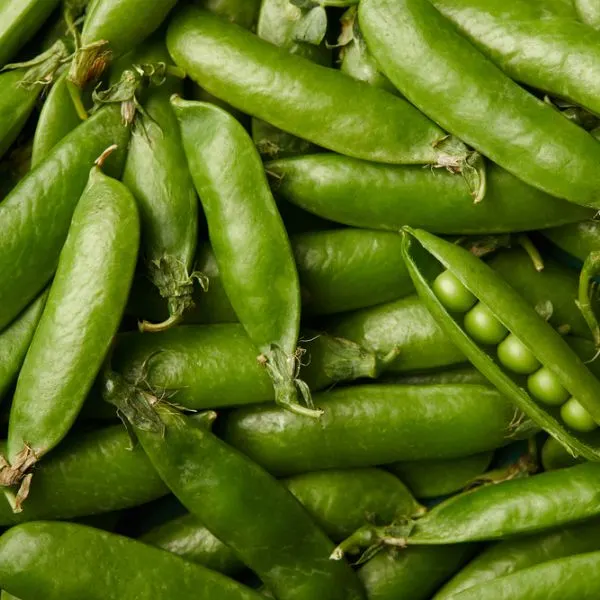
Peas are herbaceous flowering annual plants in the same biological family as beans, Fabaceae. Also known as garden peas, these plants are cultivated in various parts of the world for their edible seeds.
Like beans, they are leguminous plants, with nodules in their roots that help fix atmospheric nitrogen in the soil. They replenish used up nutrients in the soil so they are very crucial and effective for moderate to heavy feeders like zucchini.
Peas improve the quality of the yield of other plants, zucchini in this case, because they supply nutrients to the soil. They also maximize space in your garden and serve as mulch when they die.
22. Pepper Plants
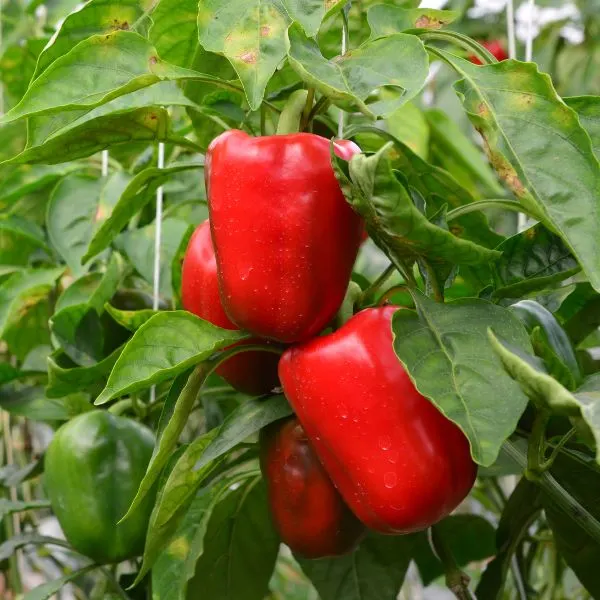
Pepper plants are flowering plants of the nightshade family Solanaceae, like eggplants and tomatoes. There are several species and cultivars of pepper plants existing. They produce peppers of various colors like red, yellow, orange and green.
Although peppers have deep taproots and are heavy feeders, they are god companion plants for zucchini. Competition can be reduced by proper spacing and growing legumes. Pepper plants are compact and can have their fruits shielded from the sun by zucchini plants.
They maximize garden space and need low maintenance. Their flowers attract pollinators like bees and butterflies. They also deter aphids, cabbage worms, deer, mites and rabbits.
23. Parsley
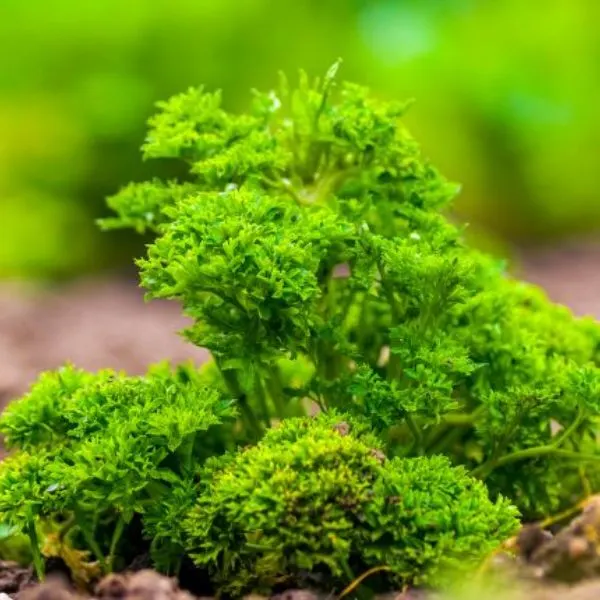
Parsley, also less commonly called garden parsley, is a flowering plant cultivated widely across the world for use as a medicinal herb or in cooking as a vegetable. This aromatic plant belongs to the biological family Apiaceae.
This is a very good companion plant for your zucchini. It is fairly easy to grow, repels several common pests and attracts useful insects. It encourages the growth of many plants near it this way and makes for a healthy plant environment.
Parsley attracts hoverflies, tachinid flies and beneficial or parasitoid wasps. These prey on aphids and moths. The plant aids pollination while reducing pest infestation.
24. Radishes

A radish is a root vegetable belonging to the biological family Brassicaceae, the cabbage family. Its roots are edible and so are the leafy greens atop them. They may be eaten raw, which they mostly are, or cooked.
There are several cultivars of radishes in different colors, sizes and shapes. The edible roots and green leaves above it are typically eaten raw as a salad vegetable or with other foods after being cooked by several cooking methods.
In addition to thriving in similar conditions as your squash, radishes are good companion plants for zucchini because they can help control squash vine borers. Radishes are also heavy feeders and can attract similar pests. You can add tansy to control other pests.
25. Rosemary
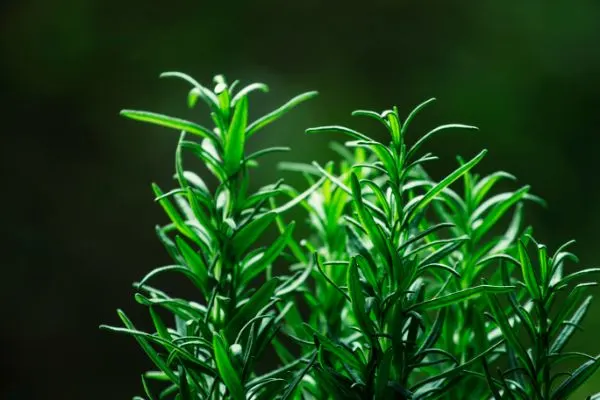
Rosemary is a low, woody perennial plant with thin and needle-like leaves which are fragrant and evergreen. Its flowers may come in blue, white, pink or purple. It is a herbaceous flowering plant in the mint family Lamiaceae.
This is another herb that serves as a good companion plant for zucchini. It produces a scented oil which repels different insects like earworms, squash bugs, cucumber beetles and cabbage moths (which lay cabbage worms or loopers).
The plant prevents the infestation of pests this by masking the scent of zucchini so that these plant pests do not get drawn to them and destroy your crop. Rosemary’s presence is also believed to help improve the flavor and taste of other garden plants.
26. Sage
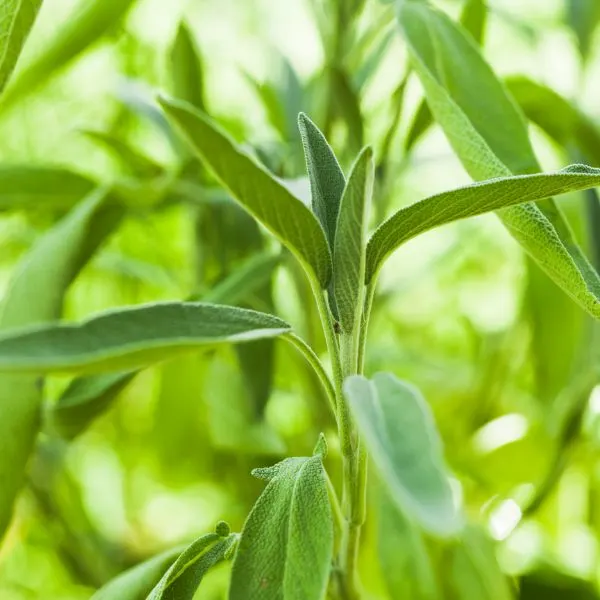
Sage, otherwise known as common sage, is a perennial plant easily distinguished by its grayish leaves and blue to purple flowers. It is another herb in the mint family Lamiaceae which is beneficial to your zucchini. It is aromatic, bushy and edible.
Zucchini is a heavy feeder while sage is a light feeder so they do not compete for nutrients. The strong aroma of sage can keep several pests away from your crop. Also, sage bears beautiful flowers which attract insects such as butterflies and bees that aid pollination.
27. Sunflowers
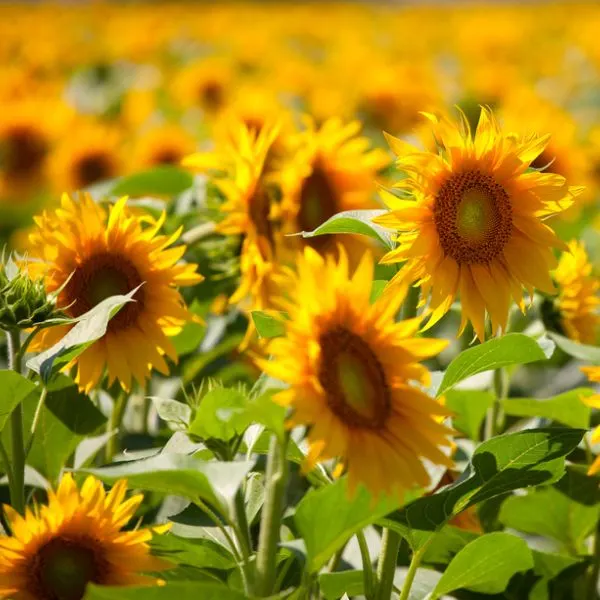
A sunflower is any species of annual and perennial plants that belong to the genus Helianthus in the family Asteraceae, the daisy family. They bear flowers which have large heads, dark disk florets and flamboyant yellow rays.
These beautiful flowers make sunflower a good companion plant for zucchini. They attract bees and birds to pollinate the crops in the area while also preying on pests. The tall plant can also serve as a trellis for vining zucchini varieties.
28. Thyme
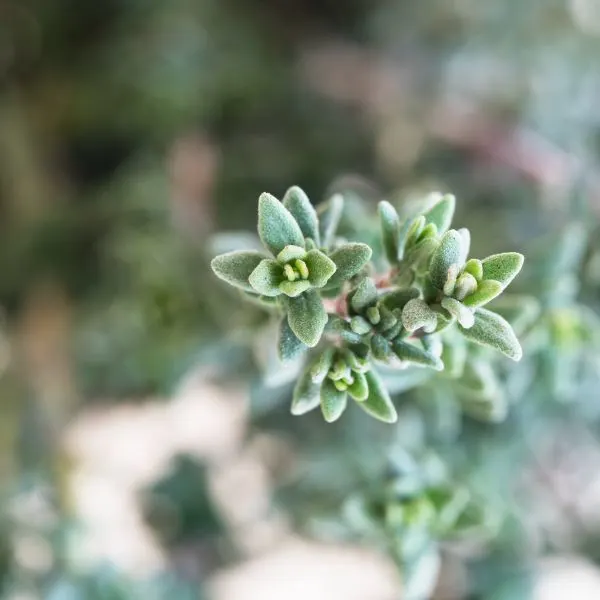
Thyme is an aromatic evergreen herbaceous plant in the mint family Lamiaceae. It is a perennial flowering plant closely related to mint, oregano and sage. It is yet another good companion plant for your zucchini in the garden.
This plant contains a compound known as thymol which has anti microbial and anti fungal properties. It has a strong scent that is able to repel pests while also limiting the effect of any disease-causing organism within the soil.
The presence of thyme can also help prevent any root rot. The disease is caused by a fungus in the soil and because thyme has antifungal properties, it prevents this disease.
29. Tomatoes
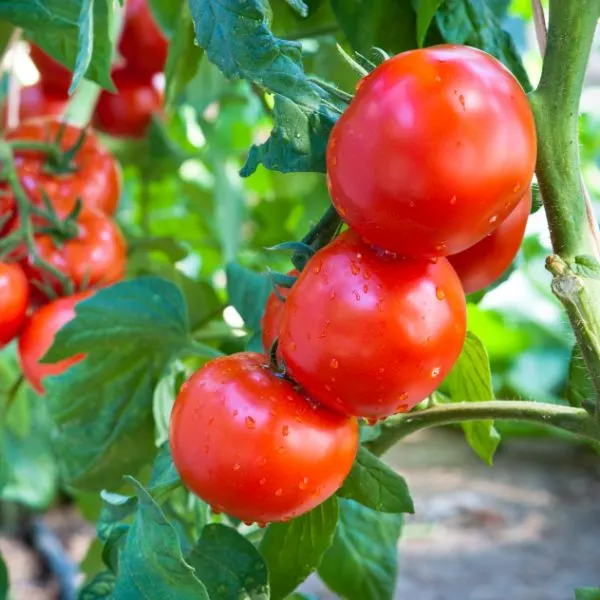
A tomato plant is a South American plant of the nightshade family Solanaceae. It produces a widely grown mildly acidic edible fruit also known as tomato, with many varieties in red or yellow color. It is pulpy and may be eaten raw or cooked.
Tomatoes are great companion plants for your zucchini, when spaced properly, because they maximize garden space and attract pollinators by their flowers.
30. Yarrow

Also known as old man’s pepper, sanguinary, devil’s nettle, soldier’s woundwort or common yarrow, yarrow is a flowering herb in the aster or daisy family Asteraceae. It has a sweet scent and its flowers may be white, yellow, pink or red.
This plant is another good companion plant for your zucchini. Its flowers attract pollinators such as bees of several types (bumble bees, digger bees, leafcutting bees, mason bees, miner bees, sweat bees), beetles and butterflies which aid pollination.
They also attract predatory insects like braconid wasps, chalcid wasps, damsel bugs, green lacewings, hoverflies, ladybugs, pirate bugs, parasitoid wasps and robber flies.
Bad Companion Plants for Zucchini
1. Broccoli

Broccoli is a flowering plant in the family Brassicaceae, the cabbage family. It has large, partly developed green flowers that make up its head, stalks and leaves which are the edible parts of the plant, the main reason it is cultivated.
It should be kept as far away as possible from your zucchini because it is also a heavy feeder. It can compete with your squash for nutrients and attract harmful insects to it.
2. Brussels Sprout
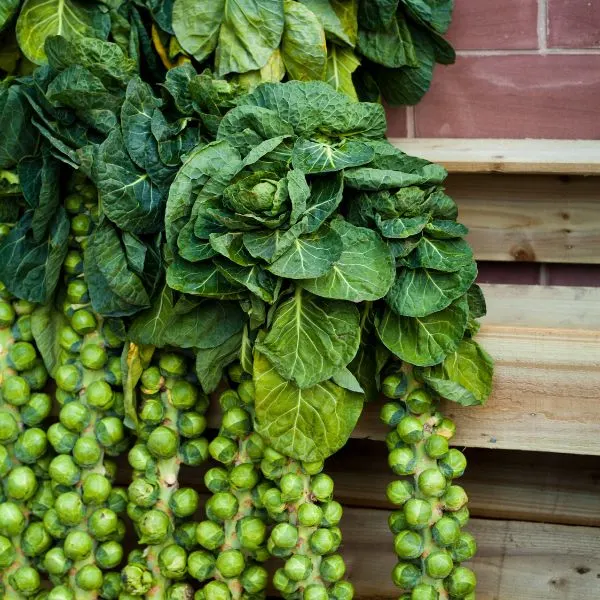
Brussels sprouts are flowering plants in the cabbage family grown for their edible buds. They are green leafy vegetables resembling very small cabbages. As a brassica, Brussels sprout is a very bad companion plant for zucchini.
Competition and pest infestation can arise if these two plants are grown next to each other. This will lead to poor yield in one or both plants.
3. Cabbage
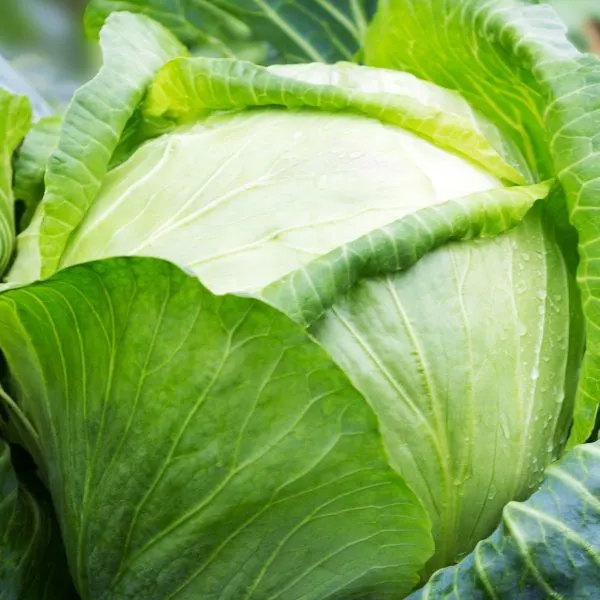
Cabbage is a flowering biennial plant mostly grown as a vegetable crop for its edible and tightly packed leaves. Its leaves are layered and may be white, red or green in color. It is another bad companion plant for zucchini.
This is another brassica that should not be grown near your zucchini. They will compete for nutrients and space while also attracting similar pests.
4. Cauliflower

Cauliflower is another flowering plant in the Brassicaceae family, cultivated for its partially developed flowers, referred to as the head or “curd”. The head is edible and mostly in the colors white, yellow, green, orange, brown or purple.
Although zucchini and cauliflower have similar care needs, the two should not be grown near each other. They may both yield poor produce because of competition and pests.
5. Cucumbers
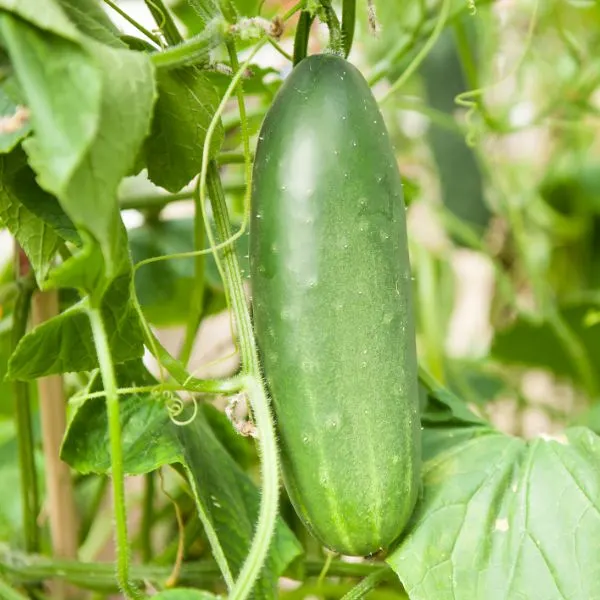
Another bad companion plant for zucchini is the cucumber. Cucumber is a creeping vine plant considered an annual crop. The plant produces mostly cylindrical green fruits used in cooking as vegetables, usually eaten raw or pickled.
This flowering plant also belongs to the family Cucurbitaceae. Planting lots of crops within the same family, especially heavy feeding brassicas and gourds, is not the best idea as they can compete and choke each other out.
6. Fennel
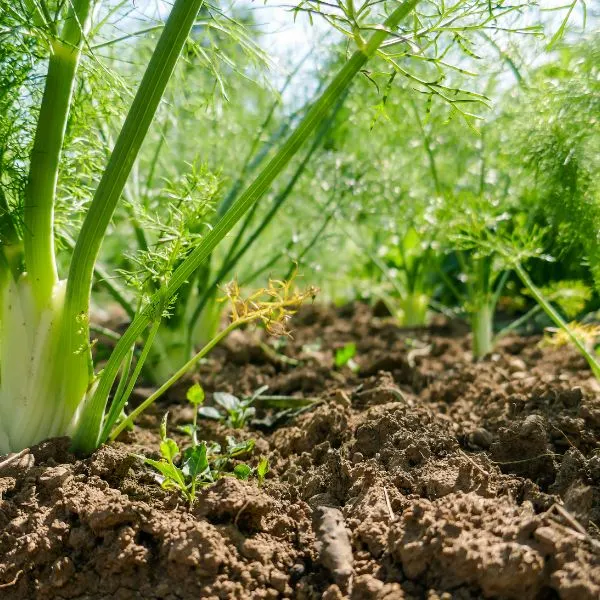
Fennel is a species of flowering plants in the carrot family. This hardy, perennial herb has yellow flowers and feathery leaves. It is yet another bad companion plant for zucchini, as it contains allelochemicals.
Allelochemicals are biochemicals that influence development processes like germination, growth, survival and reproduction of other organisms. Fennel can inhibit and stunt the growth of zucchini and many other garden plants.
7. Kale
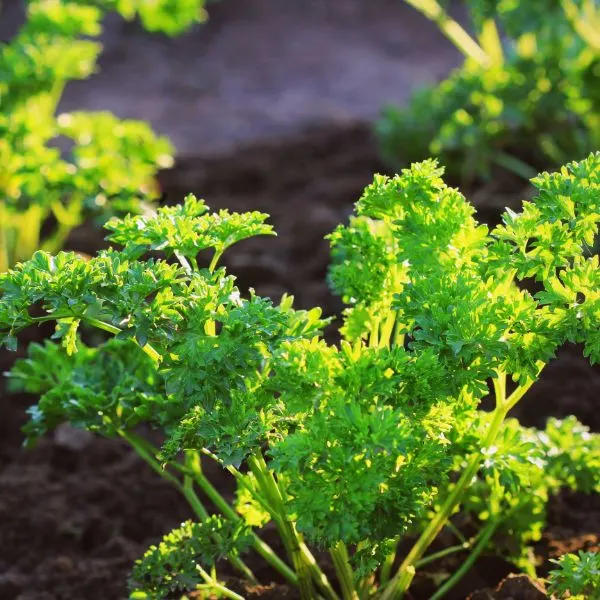
Kale, also called leaf cabbage, is a cabbage cultivar grown for its edible green or purple leaves, or for use as an ornamental plant. As a brassica, it is a bad companion for zucchini.
Kale is a heavy feeder too. It would battle with your plant for the nutrients and space in the soil. Also, they attract the same pests and can easily share diseases.
8. Kohlrabi

Kohlrabi is a variety of wild cabbage with thin stems and yellow flowers also known as the German turnip. Its stems and leaves are edible and it tastes very much like cabbage. It should not be planted near your zucchini.
This is because although they both have similar care needs, zucchini and kohlrabi are heavy feeders. They will compete with each other, attract similar pests and reduce yield.
9. Melons
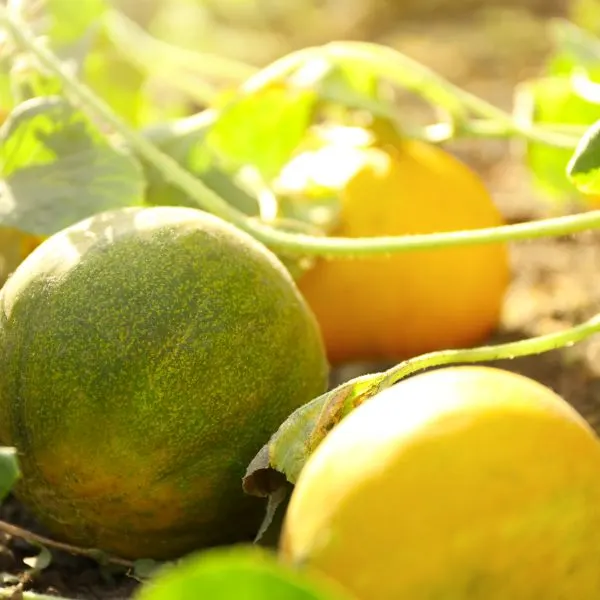
Melons are the various plants of the family Cucurbitaceae, the gourd family to which zucchini belongs. These flowering plants produce sweet, edible, and fleshy fruit. Both the plants and their fruits are referred to as melons.
Zucchini does not grow well near its family members. They can seriously fight for nutrients, sunlight and space. They may also attract similar pests, resulting in poor produce.
10. Potatoes
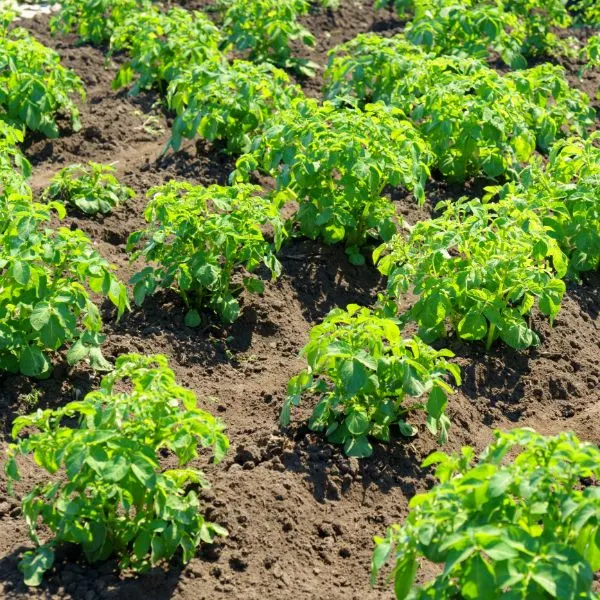
Potatoes are members of the nightshade family Solanaceae, like eggplants and peppers. They are perennial plants grown as root vegetables. These starchy tubers are also not suitable for growing near apple trees.
As root vegetables, their roots grow downwards and reach low depths. They also need relatively high levels of water for maximum growth. To avoid unnecessary harmful competition, do not plant these crops next to each other.
11. Pumpkins
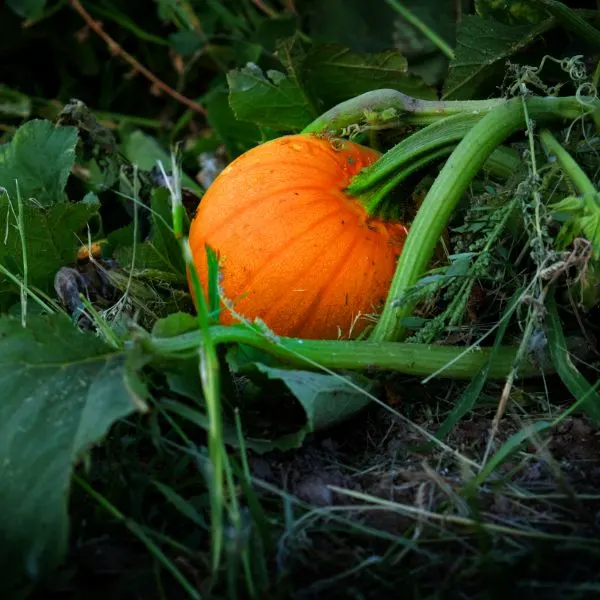
The pumpkin is a coarse vining plant widely cultivated for the fruit it produces. This pumpkin fruit is a large pulpy round fruit with firm orange skin and numerous seeds. This plant is also in the gourd family Cucurbitaceae.
Pumpkin is a bad companion plant for zucchini. It competes aggressively with your plant for sunlight, water, nutrients and space. It can choke out your zucchini.
12. Winter Squash
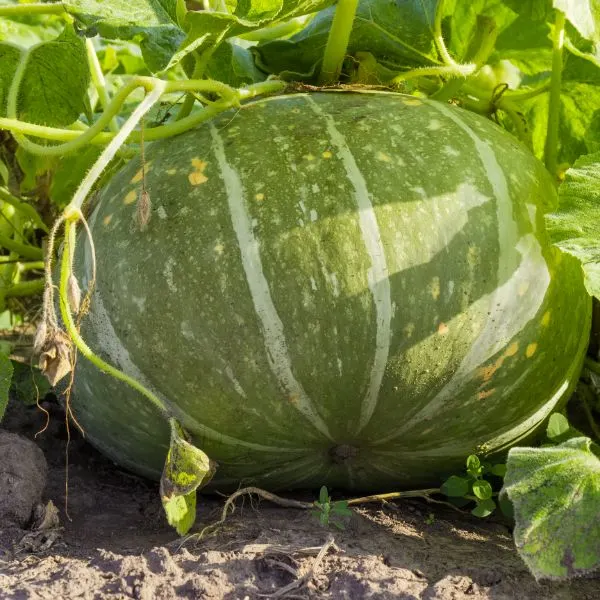
Winter squashes are late-growing, oddly shaped and rough fruit varieties of Cucurbita species which are small to medium sized, but with long-keeping qualities and hard rinds. They are only different from summer squashes because they are harvested and consumed when they rinds and seeds mature.
Since they are also squashes in the family Cucurbitaceae, it is not beneficial to plant these crops near your zucchini. This will avoid competition and heightened exposure to pest infestation. Members of the melon family can also cross-pollinate so this is another reason to avoid growing them together.
FAQs
What should not be planted next to zucchini?

Some crops that should not be planted next to zucchini are: broccoli, Brussels sprouts, cabbages, cauliflower, cucumbers, fennel, kale, kohlrabi, melons, potatoes, pumpkins and winter squashes.
What is good to plant next to zucchini?

There are several plants which are good to plant next to zucchini. Thirty (30) are listed above but they are mostly flowers, legumes, alliums and herbs.
Can zucchini and tomatoes be planted together?
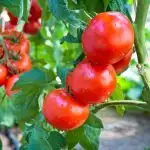
Yes, zucchini and tomatoes can be planted together. See the article above.
Can cucumbers and zucchini be planted together?

No, cucumbers and zucchini should not be planted together. See the article above.
Wrapping up
Zucchini is a vining herbaceous flowering plant in the gourd, cucurbit or melon family Cucurbitaceae. Listed and explained above are thirty (30) good and twelve (12) bad companion plants for these crops.
They provide several vitamins and minerals, including the vitamins A, B1 (thiamine), B2 (riboflavin), B3 (niacin), B5 (pantothenic acid), B9 (folate), C and K, calcium, iron, magnesium, manganese, phosphorus, potassium, sodium and zinc.
In addition to the many nutrients it contains, zucchini is high in water and antioxidants. It is a superfood, low in calories but high in vitamins and minerals. The properties it contains can help to reduce high blood pressure.
While growing them, remember that zucchini need an bees to aid in pollination, daily exposure to full sunlight, very fertile moisture retentive soil, a trellis or lots of sprawling space (for vining varieties) and frequent, consistent watering.
Because they are heavy feeders so avoid planting other members of their botanical family Cucurbitaceae (also to avoid cross-pollination) or members of other heavy feeding families like Brassicaceae and Solanaceae.
More companion plants
